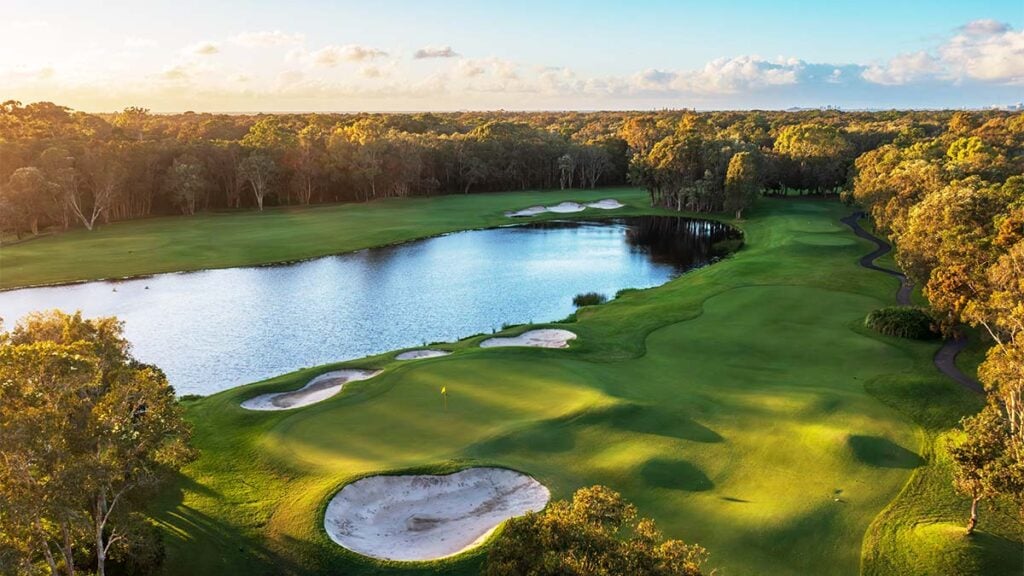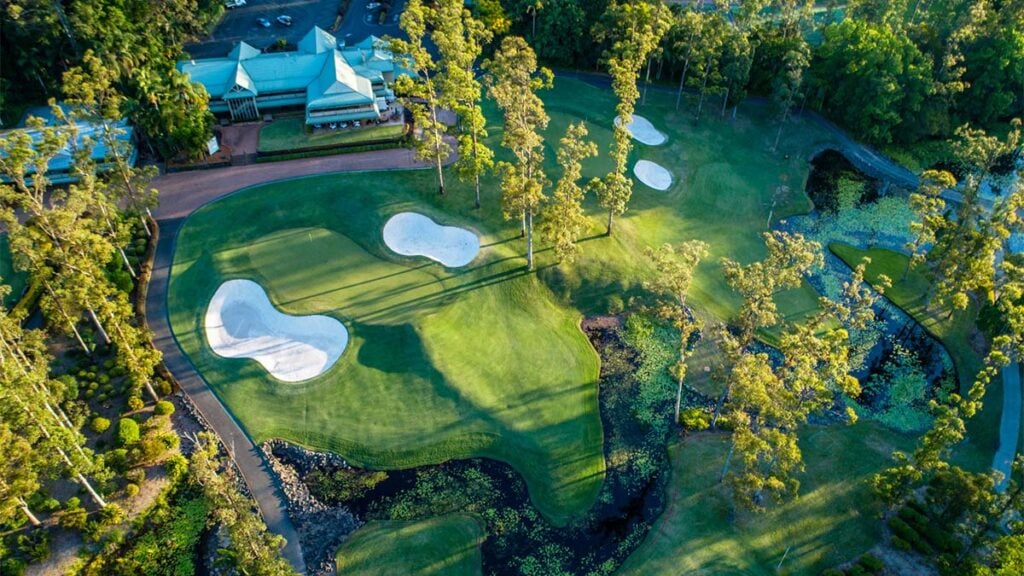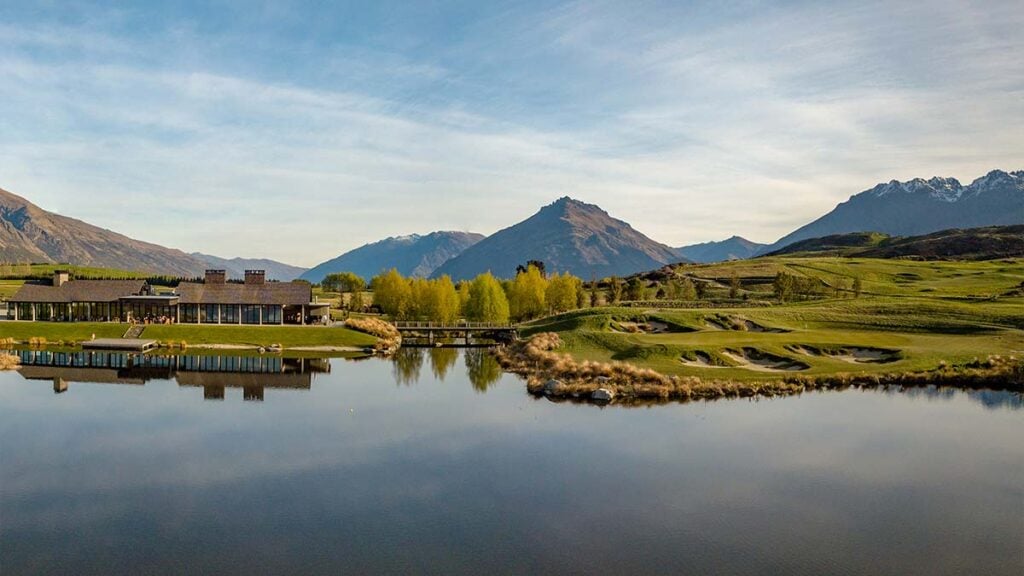When we think about great achievements in golf, we often think of players who have triumphed over adversity. Ben Hogan overcoming his car accident to win the three majors in 1953, Tiger Woods overcoming injuries, scandal and age to win the 2019 Masters and even Rory McIlroy finally overcoming the curse of the career Grand Slam to win at Augusta National earlier this year.
When it comes to great shots or holes played, however, that context is often overlooked. For some reason it’s not accounted for the in equation, yet it probably shouldn’t be. And that is why I will make the case that Dustin Johnson’s 72nd hole at Oakmont during the 2016 U.S. Open is the greatest hole ever played.
I know what you’re saying. It’s a big claim. So let’s dive into the details and data.
I’ll assume that you haven’t watched the final round from 2016 as many times as me. I doubt anyone has. Sunday broadcasts of majors on YouTube have become a perfect solution to any boredom I have in my life.
Just over seven hours into the broadcast at Oakmont, Johnson faced a four-foot putt on the 71st hole, having run his birdie putt uncomfortably beyond the hole.
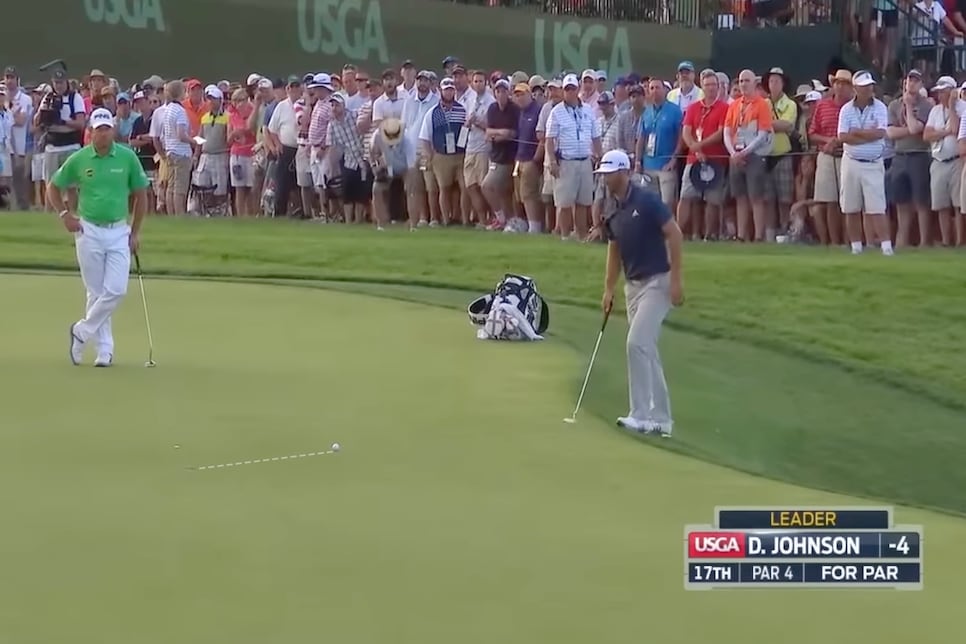
Then he rolled the comebacker for par to remain two shots ahead, and Brad Faxon said out loud what we were all thinking.
“That was very close to the length of putt he missed last year on 18 at Chambers Bay.”
Knowledgeable golf fans will remember that putt. Playing the par-5 18th hole in the final round of the previous year’s U.S. Open, Johnson was one shot behind Jordan Spieth but reached the green in two and left himself a 12-footer for eagle and the win. DJ proceeded to miss but had a four-footer to birdie and to force a playoff, only to miss that short one as well, gifting the title to Spieth.
More U.S. Open preview stories 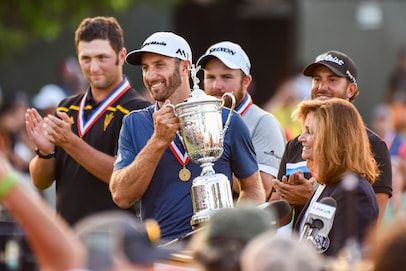 U.S. Open U.S. Open 2025: Requiem for Dustin Johnson, and the day he became who he was always meant to be
U.S. Open U.S. Open 2025: Requiem for Dustin Johnson, and the day he became who he was always meant to be 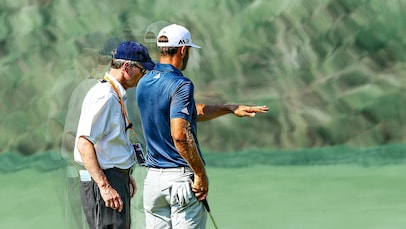 U.S. Open preview The ball moved, rules chaos followed—and the game changed forever
U.S. Open preview The ball moved, rules chaos followed—and the game changed forever 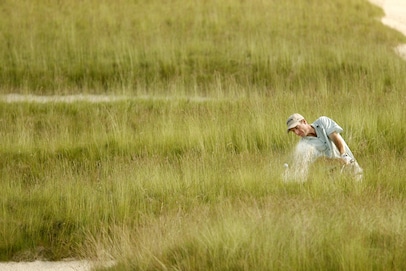 The Ultimate Examination U.S. Open 2025: When does the USGA cross the line? A past champion explains
The Ultimate Examination U.S. Open 2025: When does the USGA cross the line? A past champion explains
It’s important to remember that moment, and others, to quantify exactly what was on the line as D.J. walked towards stood on the 18th tee at Oakmont.
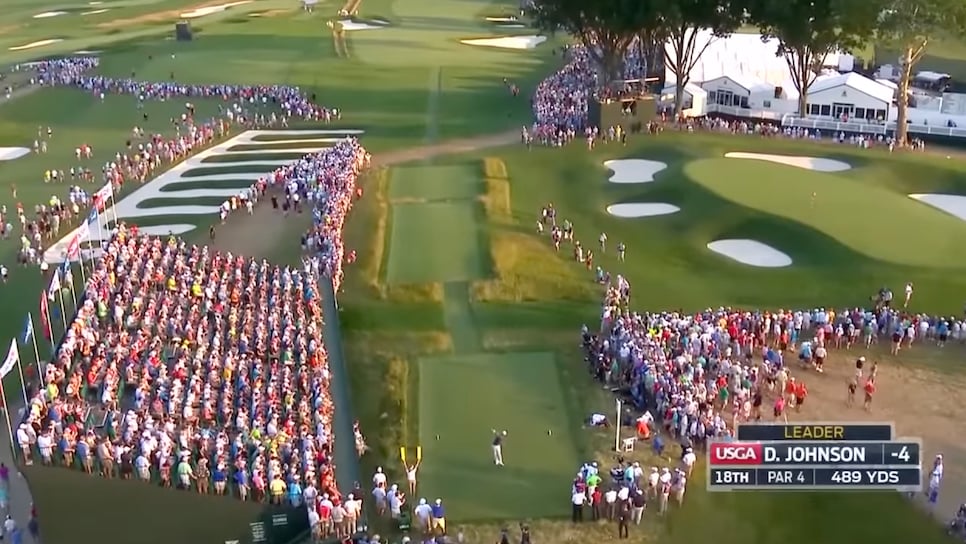
He had led the 2010 U.S. Open by three with 18 holes to play but infamously made a triple bogey on the second hole and double bogey on the third hole, falling out of contention and allowing Graeme McDowell to win his first, and only, major title. And then there was the gut-wrenching penalty on the 72nd hole at the 2010 PGA Championship at Whistling Straits, Johnson grounding his club in what he thought was a waist area but was a bunker, keeping him out of a playoff.
Even after Chambers Bay, Johnson went to St. Andrews for the very next major and led by one after 36 holes. While for a moment it seemed that could be his redemptive moment, he then shot 75-75 over the weekend, the highest score of anyone to make the cut, and finished tied for 49th.
All that to say, the weight of past heartbreak and scars was clearly weighing on the 31-year-old. And yet it was the only thing hanging over his head.
Skip back to the 4 hour 23 minute mark of the broadcast and you’ll witness, in real-time, the moment Johnson’s ball moved on the fifth green. You can read about the details of the incident here, but for the context of the 72nd hole it’s important to remember that while Johnson was informed that the USGA rules officials were looking into the incident, no judgement had been made as to whether he was going to be hit with a penalty shot or not.
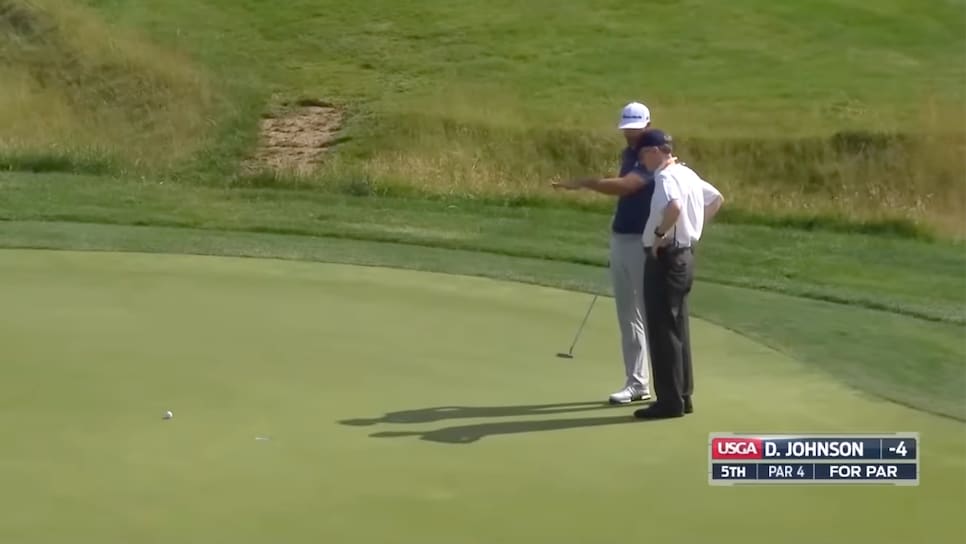
Johnson was two shots ahead on the leaderboard but that lead could (and ultimately did turn out to) be one shot.
Back to the 18th tee.
As you can see from the image below, Johnson arrived at the final hole and faced an extremely difficult hole, straight into the 5 to 10 mph wind coming from the clubhouse.

The tee sign would say the hole was playing 489 yards but the effective distance was far greater at 6:30 p.m. local time that Sunday. To say the hole was playing hard is a colossal understatement.
The last time the U.S. Open was at Oakmont in 2007, the par-4 18th hole played to an average score of 4.6. That is astronomically high. In fact, it’s the third hardest hole at the U.S. Open this century. Only the 18th and fifth hole at Merion have played as harder holes, both averaging +0.71 over par for the week in 2013.
More U.S. Open preview stories  Golf Digest Logo U.S. Open 2025: The five big changes to a new-look Oakmont
Golf Digest Logo U.S. Open 2025: The five big changes to a new-look Oakmont 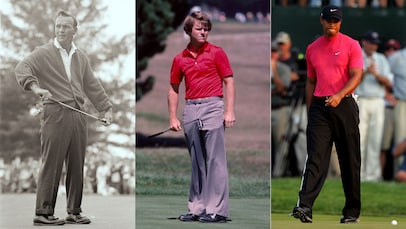 Scottie Beware! U.S. Open 2025: Beware the superstar curse at Oakmont
Scottie Beware! U.S. Open 2025: Beware the superstar curse at Oakmont 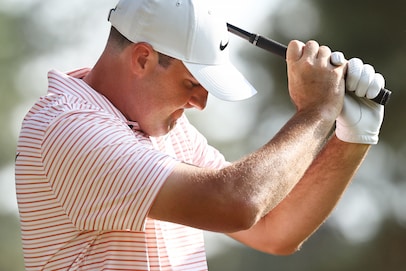 golf debate answered Should the USGA strive to have the U.S. Open be won at even par?
golf debate answered Should the USGA strive to have the U.S. Open be won at even par?
By the time Johnson stood on the final tee in 2016, 63 golfers had finished the hole in the final round. Only Zach Johnson had made a birdie. It was playing as the hardest all week, with players five times more likely to make a bogey or worse (133) than birdie (32).
One thing that may have played in D.J.’s favor, was his company on the tee. He was paired that Sunday with Lee Westwood. While the Englishman had a tough day, ultimately shooting 80, he is one of the best drivers of a golf ball in his generation. Having birdied the 17th hole, Westwood had the honor on the tee and showed Johnson exactly what to do, hitting a dart right down the middle of the fairway.
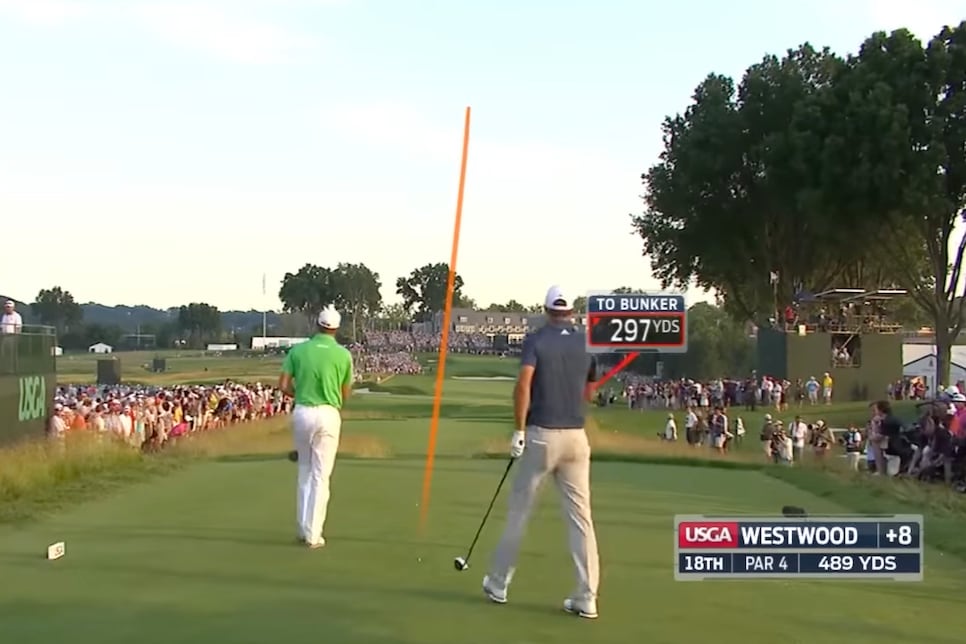
Now, it was Dustin’s turn.
After asking a cameraman to move his shadow, Johnson hit his patented-fade off the tee and split the fairway. And I mean “split.” The 18th fairway at Oakmont is 28 yards wide but even if it was three yards wide, DJ’s ball would have been on the short grass.

“Mr. Almost. Firmly entrenched on the list of best players to never win a major” said Joe Buck on the commentary as Johnson and his brother, and caddie, Austin made their way towards the fairway. It was clear to everyone watching and on-site what was on the line here.
What Johnson now faced was a 192-yard approach shot, uphill, into the wind, with his first major title on the line.
Let’s quickly look at what is expected from a tour pro from that distance, removing the pressure and specific challenge of the 18th hole at Oakmont. From 175 to 200 yards, the average proximity on the PGA Tour is a little more than 34 feet. Even hitting the green isn’t a certainty; 57.7 percent of players miss the green from that distance.
Johnson picked a 6-iron and addressed his ball. Right at the moment he was about to take the club away, a walkie-talkie alert sounded from the scrum of photographers and camera operators behind the leader.
“Really?!” D.J. uttered as he stepped away from the ball.
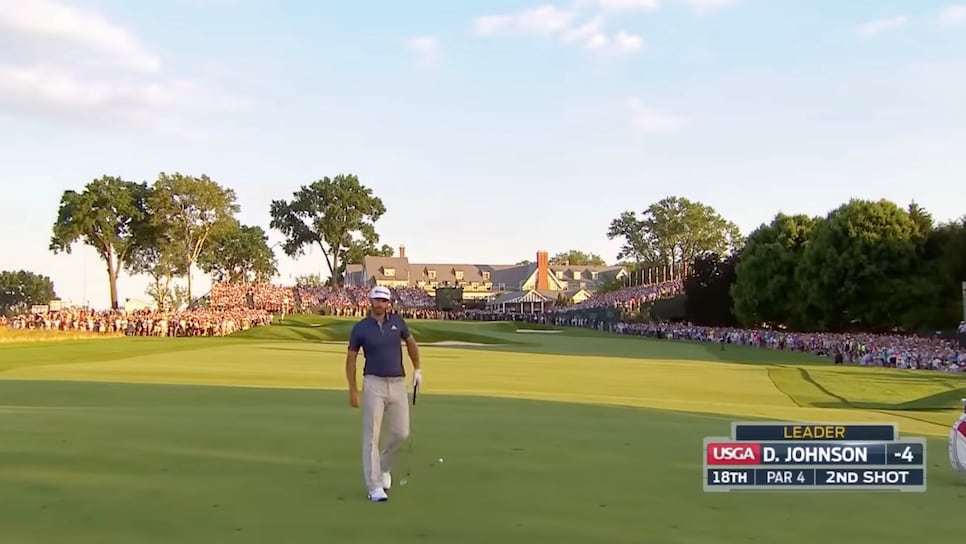
Two quick practice swings and an audibly loud deep breath and he was set again, 192 yards from the hole. “This is probably the most important shot Dustin Johnson has ever hit, right here” said Paul Azinger, alongside Joe Buck in the booth for Fox. The pressure was intense.
Again, with his trademark left-to-right shot shape, Johnson flushed a 6-iron towards to the green. As the ball apexed, he recoiled his club as if he were sheathing his sword to say the battle was over.
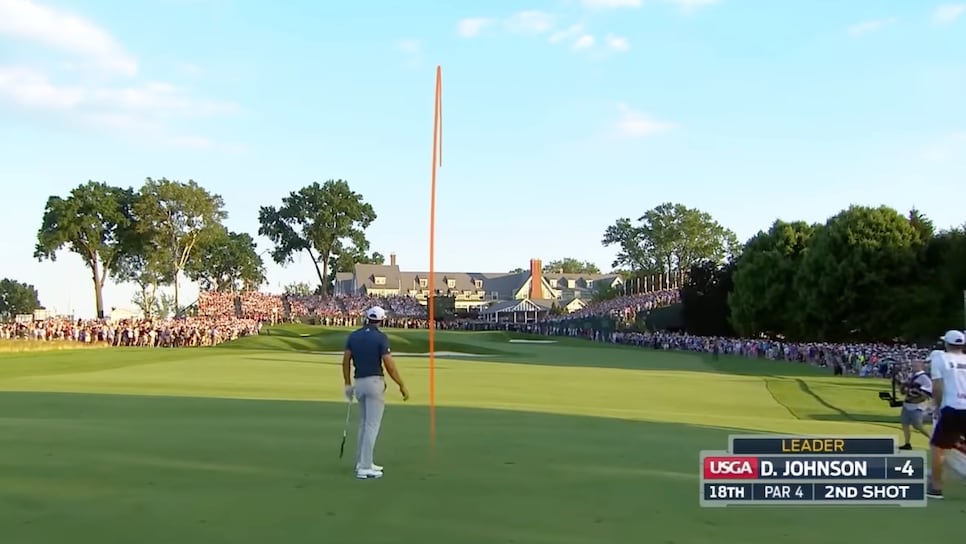

Kohjiro Kinno
He was right.
Johnson’s approach landed inches beyond a slope in the middle of the green and rolled just past the hole, coming to rest four feet away.
“The shot of his life!” Azinger shouted on the broadcast. And there was, and remains, little doubt about that.
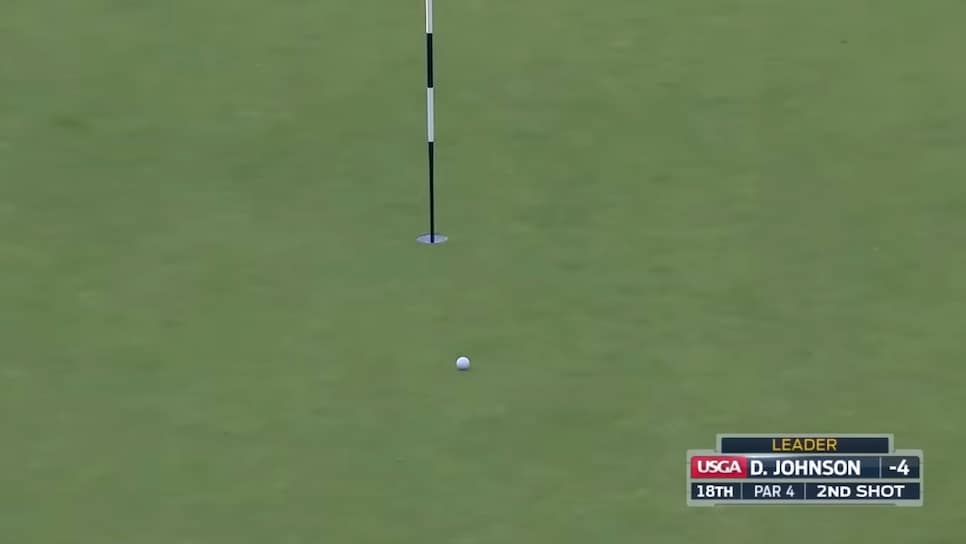
Again, as I make my case for this hole, let’s put Johnson’s approach into statistical context. His second shot was from 192 yards and finished four feet from the hole. On the PGA Tour, the probability of an approach from 190 to 200 yards finishing inside five feet is 1.9 percent, or 1-in-50 attempts roughly.
In 2016, the USGA wasn’t using Strokes Gained to measure shot success; however, using modern PGA Tour data, we can estimate that D.J.’s shot on the 72nd hole would gain 0.99 shots in approach.
More U.S. Open preview stories 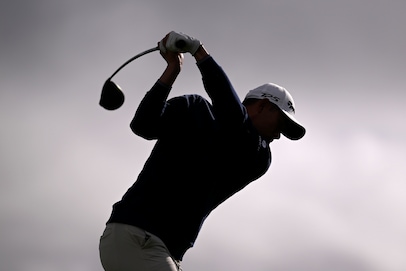 Golf Digest Logo U.S. Open 2025: The 3 shots you need to win at Oakmont
Golf Digest Logo U.S. Open 2025: The 3 shots you need to win at Oakmont 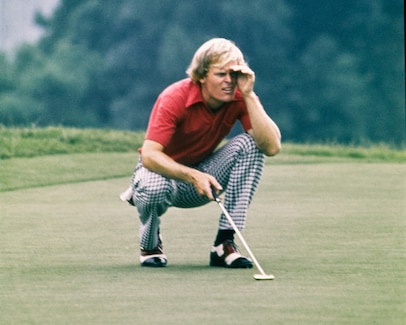 Voices U.S. Open 2025: Why Johnny Miller’s Oakmont 63 still matters
Voices U.S. Open 2025: Why Johnny Miller’s Oakmont 63 still matters 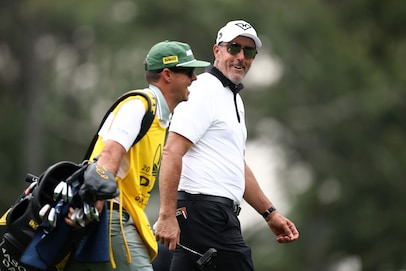 Majors Phil Mickelson says there’s a ‘high likelihood’ Oakmont could be his last U.S. Open
Majors Phil Mickelson says there’s a ‘high likelihood’ Oakmont could be his last U.S. Open
Putting that in more recent major context, Bryson DeChambeau’s bunker shot at Pinehurst gained 0.55 shots and Rory McIlroy’s hooking approach shot to the 15th hole in the final round of the Masters gained 1.01 shots.
Impressed? Westwood certainly was. Ahead of Johnson as he hit his approach, the Englishman walked back to shake D.J.’s hand after seeing where his second shot had finished.
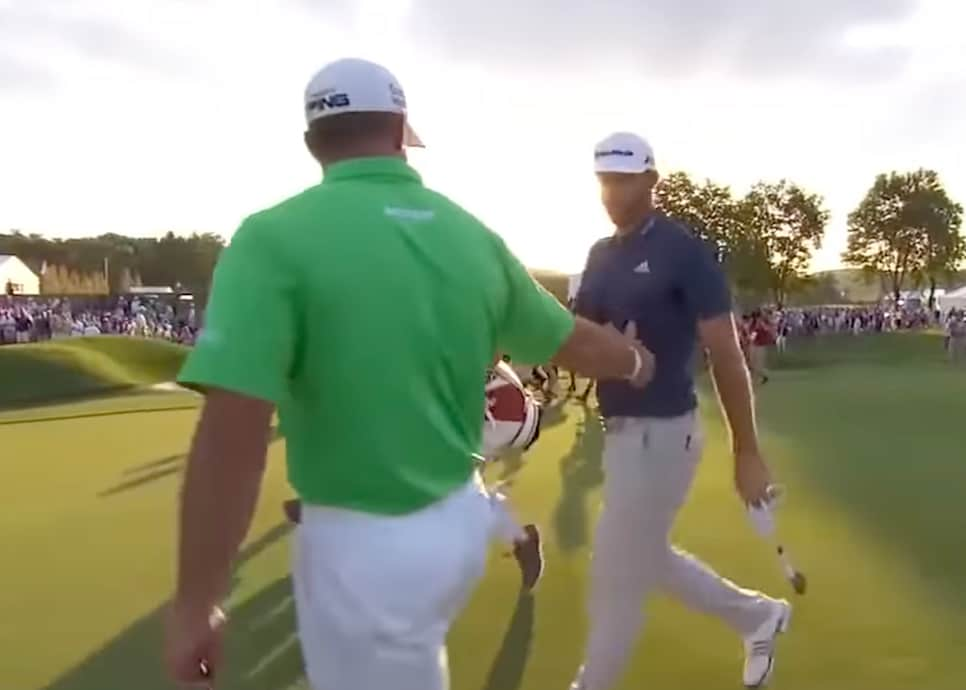
Johnson now had a four-foot putt to win the U.S. Open and finally capture his first major championship. Worth remembering that he still didn’t know if a penalty was coming for the incident on the fifth hole.
“Even on the 18th green, after I hit it in there close, I had to ask my brother, where do we stand?” Johnson told the media after this round. “I was pretty sure I was ahead, but I had no idea.”
So Johnson stood over a four-foot putt, thinking he may have to make it in order to ensure he won the U.S. Open. That length of putt is nerve-wracking enough, just rewind back to the final green at Pinehurst and McIlroy’s heartbreak last year, but when it’s on Oakmont’s greens, it is even tougher.
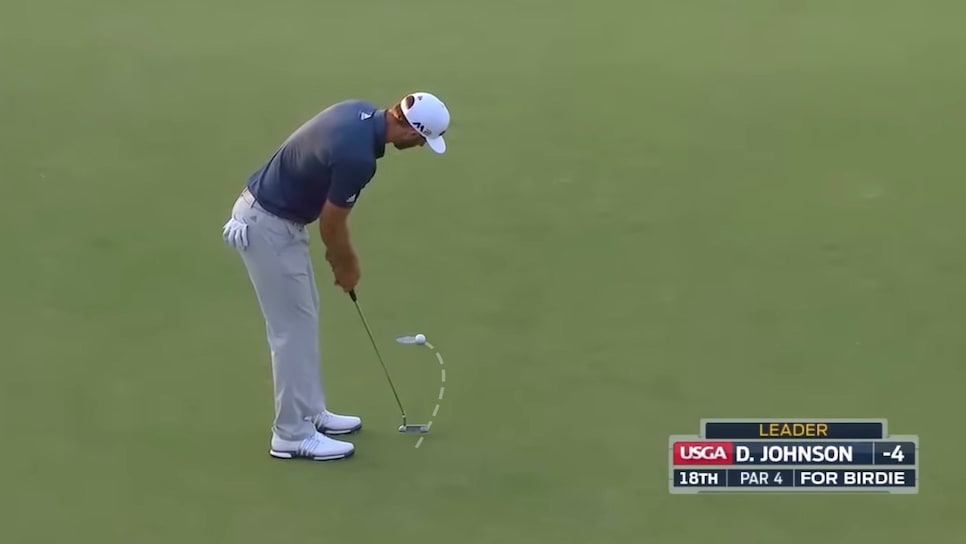
With a green running 14 on the Stimpmeter and nearly a foot of break, for just a four foot putt, D.J. rolled it in the center of the hole. A fist-pump sealed an incredible week and an incredible final hole.
He had birdied the 72nd hole to win the U.S. Open. Just the second birdie of the day on the hardest hole of the week.
The probability of a PGA Tour player making birdie on a par 4 measuring 490 yards is less than 9 percent. Again, D.J. did that, on one of the hardest courses in the world, in a major, with his first major on the line.
In fact, it’s so rare that you have to go back 40 years to find another U.S. Open winner who made a birdie-3 on the 72nd hole. The year was 1976 and Jerry Pate birdied the final hole at Atlanta Athletic Club to beat Al Geiberger and Tom Weiskopf by two shots.
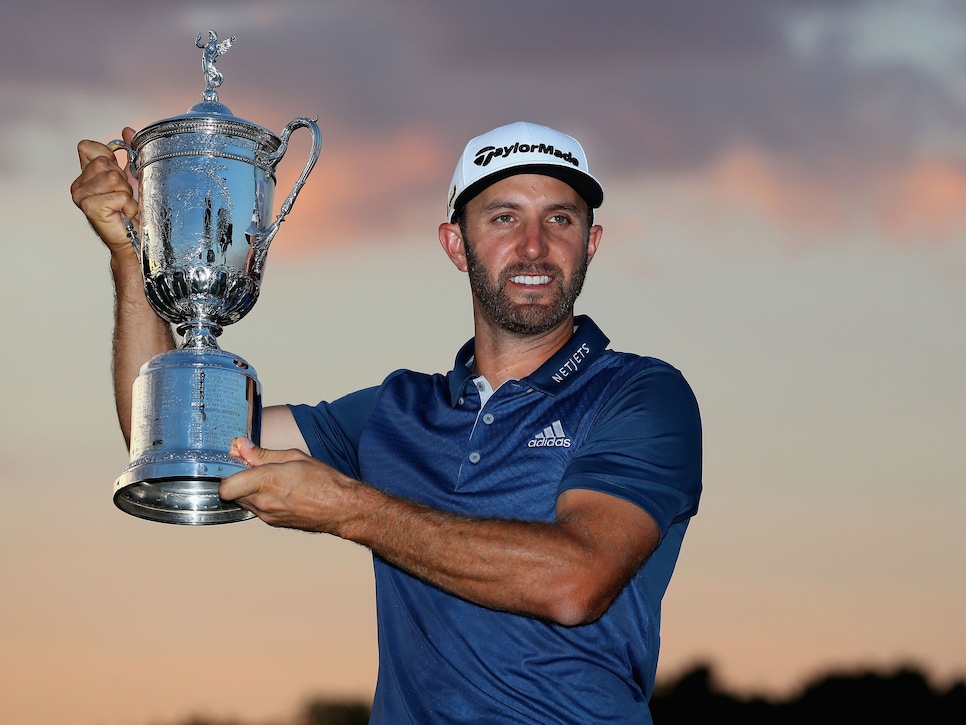
Andrew Redington
Unbeknowst to Johnson, while playing the hole, his lead had jumped to three shots with a Scott Piercy bogey behind him. The birdie made it four, but then the penalty that was added in the end, dropped it back to a three-shot victory. So after signing for a 69, just one of seven players in the final round to break par, Johnson lifted the U.S. Open trophy, just steps from where his incredible approach shot came to rest. He had finally done it. He was a major champion. How did it feel to finally get the monkey off his back?
“I feel a lot lighter.” he said to the media afterwards.
This article was originally published on golfdigest.com

